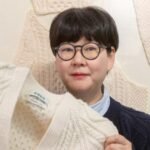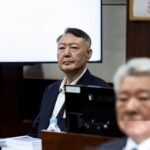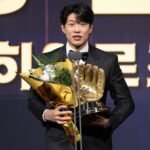Samsung’s QLC-based V9 NAND for data-intensive servers and AI devices
Samsung Electronics Co., the world’s largest memory chipmaker, said on Thursday it has begun mass production of a 286-layer high-capacity NAND memory chip to lead the fast-growing storage device market amid the artificial intelligence boom.
The South Korean tech giant said it is the industry’s first to produce one-terabit (Tb) quad-level cell (QLC) 9th-generation vertical NAND (V-NAND) in large quantities.
The output ramp-up follows Samsung’s mass production in April of triple-level cell (TLC) 9th-generation V-NAND, another type of NAND chip used to make solid-state drives (SSDs) – devices that store massive data in flash memory.
With the two types of V-NAND, Samsung aims to solidify its leadership in the high-capacity, high-performance NAND flash market.
“Kicking off the successful mass production of V9 NAND just four months after the TLC version allows us to offer a full lineup of advanced SSD solutions that address the needs for the AI era,” said Hur Sung-hoi, executive vice president and head of Flash Product & Technology at Samsung.
Samsung’s QLC-based V9 NAND
“As the enterprise SSD market shows rapid growth with stronger demand for AI applications, we will continue solidifying our leadership in the segment through our QLC and TLC V-NAND.”
INDUSTRY SHIFT FROM TLC TO QLC
Competition for NAND-based storage devices is fierce as AI chips focus on inference, which requires large-capacity storage devices to store and process images and videos.
A NAND flash is a non-volatile memory chip that stores data even when the power is off. It is currently used in devices like smartphones, USB drives and servers.
Samsung said QLC-based NAND will meet the growing demand for ultra-high-capacity SSDs used in AI data centers.
QLC NAND can store more data per cell than multi-level cell (MLC) and triple-level cell, or TCL, devices, significantly enhancing storage performance.
Samsung’s QLC-based V9 NAND
Already the dominant NAND player, controlling about a third of the global market, Samsung’s new product targets large-scale enterprise servers and AI devices.
The 286-layer V9 NAND is a cutting-edge product that succeeds Samsung’s 236-layer V8 flash products, targeting large-scale enterprise servers and AI and cloud devices.
For now, Samsung plans to focus on NAND products for AI servers but will increasingly expand its portfolio to NAND flash for on-device AI, automotive and edge devices.
STACKING TECH WAR INTENSIFIES
Major chipmakers are engaged in a game of chicken in a race to develop advanced chip stacking technology to cut costs and improve performance.
To lead rivals in the industry’s transition to high-stacking high-density flash memory, Samsung is said to unveil 430-layer NAND chips by the end of 2025.
Samsung’s TLC-based V9 NAND unveiled in April
Samsung said on Thursday it used “channel hole etching” technology to produce QLC-based V9 NAND, enabling the industry’s highest cell layer count in a double-stack structure.
The latest product, it said, has achieved 86% higher bit density than its previous generation QLC V-NAND, 20% higher data retention performance, double the write performance and 60% faster data input and output speed.
Thanks to its lower power design technology, the QLC V9 NAND has reduced data read and write power consumption by about 30% and 50%, respectively.
According to market research firm TrendForce, global NAND flash sales will reach $67.4 billion this year, up 77% from last year.
QLC NAND is forecast to account for 20% of all NAND shipments this year, with the ratio growing fast in the coming years, it said.
By Jeong-Soo Hwang
hjs@hankyung.com
In-Soo Nam edited this article.















